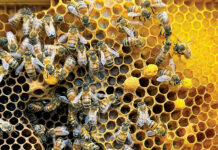Lāna‘i’s Spinner Dolphins
Peer into the world of Lāna‘i’s spinner dolphins through the eyes of a marine naturalist.
By Kristina Rau
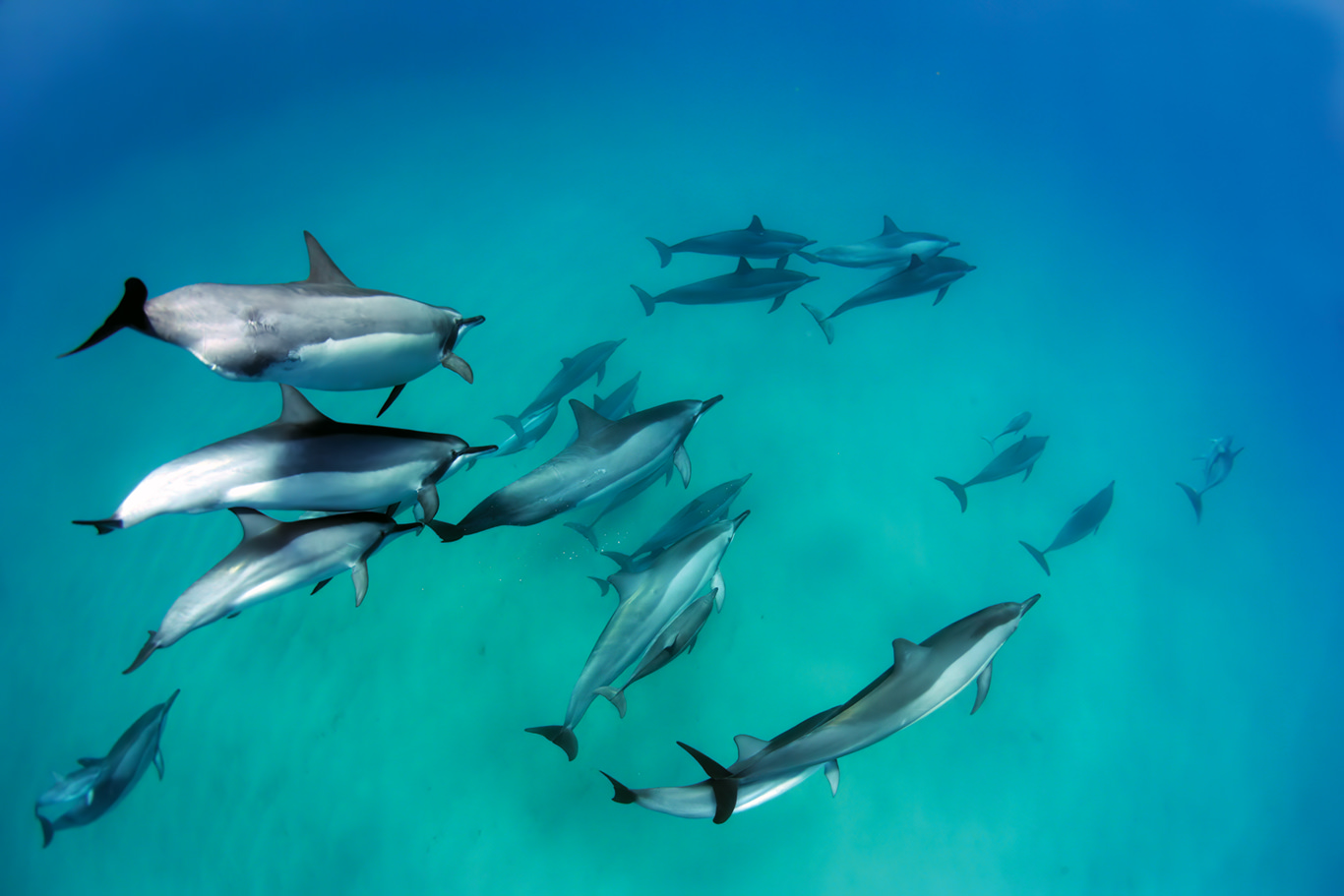
In the sapphire blue waters off southern Lāna‘i, my snorkel charter guests, my crew and I are keeping an eye out for telltale signs of the Hawaiian spinner dolphins while we search for a good snorkel spot. We scan for clusters of dark gray, shiny, triangular blades – their dorsal fins breaking the surface – and small splashes of white from playing individuals, not yet resting for the day after a long night of hunting in the deep pelagic waters, often miles offshore from the islands. The dolphins, called nai‘a in Hawaiian, usually travel in pods, like big extended families. Sometimes you can encounter pods with up to 300 individuals, which is precisely what we’re hoping to see today.
A few hundred yards ahead, I see numerous little splashes. It’s them! We slow down and keep our distance of at least 150 feet per approach regulations and before we know it, some of them excitedly speed over to the boat for a good ‘ole surf session just below the bow. Some even seem to get so excited that they peel away from the main group so fast and jump fully out of the water to race up to the front of the boat. This is one of my favorite behaviors to witness. How can one not see the fun in a dolphin’s spirit when such exuberance is portrayed to catch a pressure wave provided by a boat?
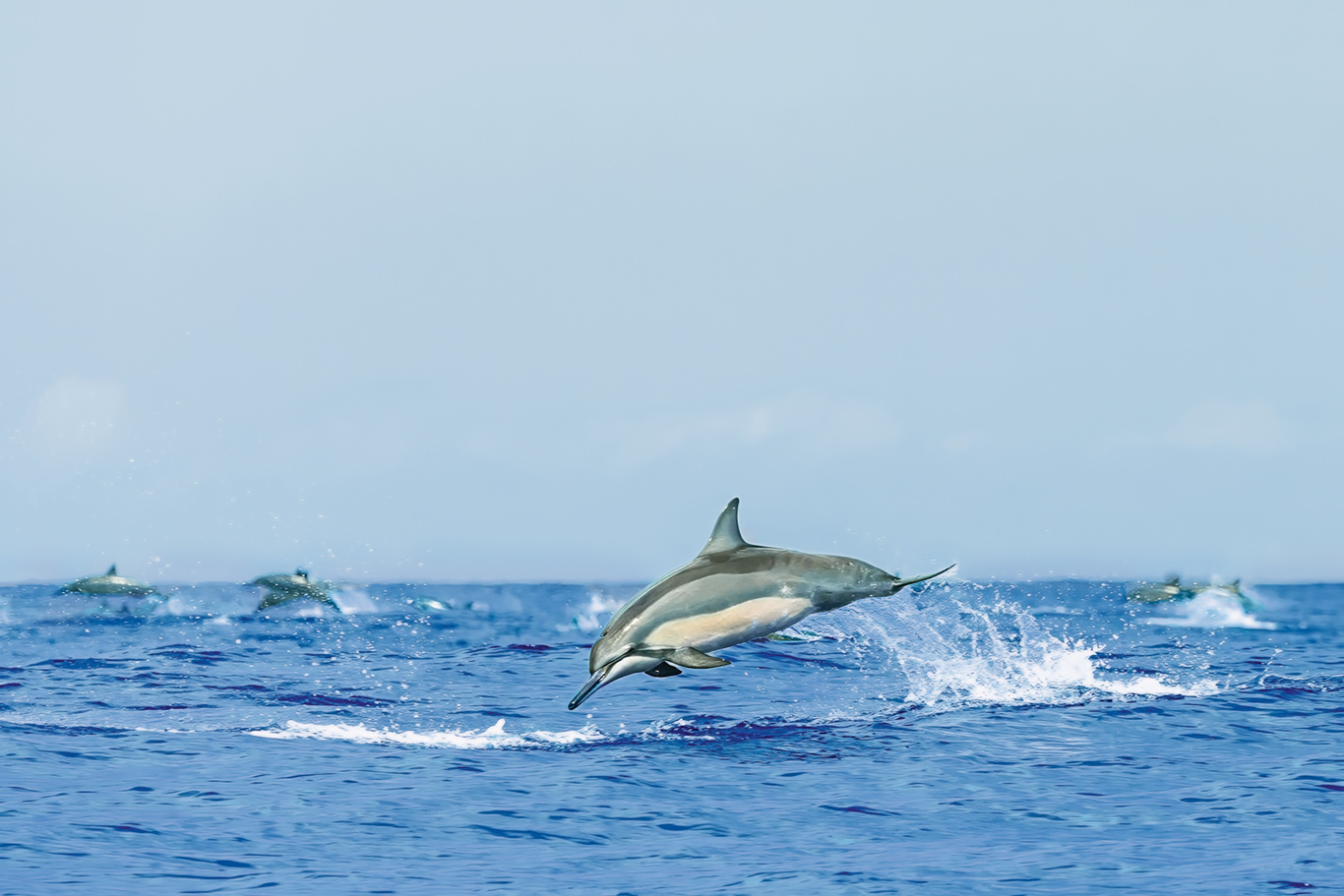
As we slowly coast to a stop, we start to hear the many “pfoof!” breaths from members of the group. I love that sound. I explain to the guests that a lot of the group are in or will shortly be in a kind of “sleep mode” throughout the day. Spinner dolphins don’t get to stop everything and zonk out on a fluffy underwater mattress like we do every night.
They go into what is called unihemispheric sleep because they must think about every single breath from the time they are born to the time they perish, which can be about 20 to 30 years. One hemisphere of the brain powers down while the other side stays wide awake so they can come up to the surface and breathe, watch out for their main predators (tiger and mako sharks), and stick with the rest of the group.
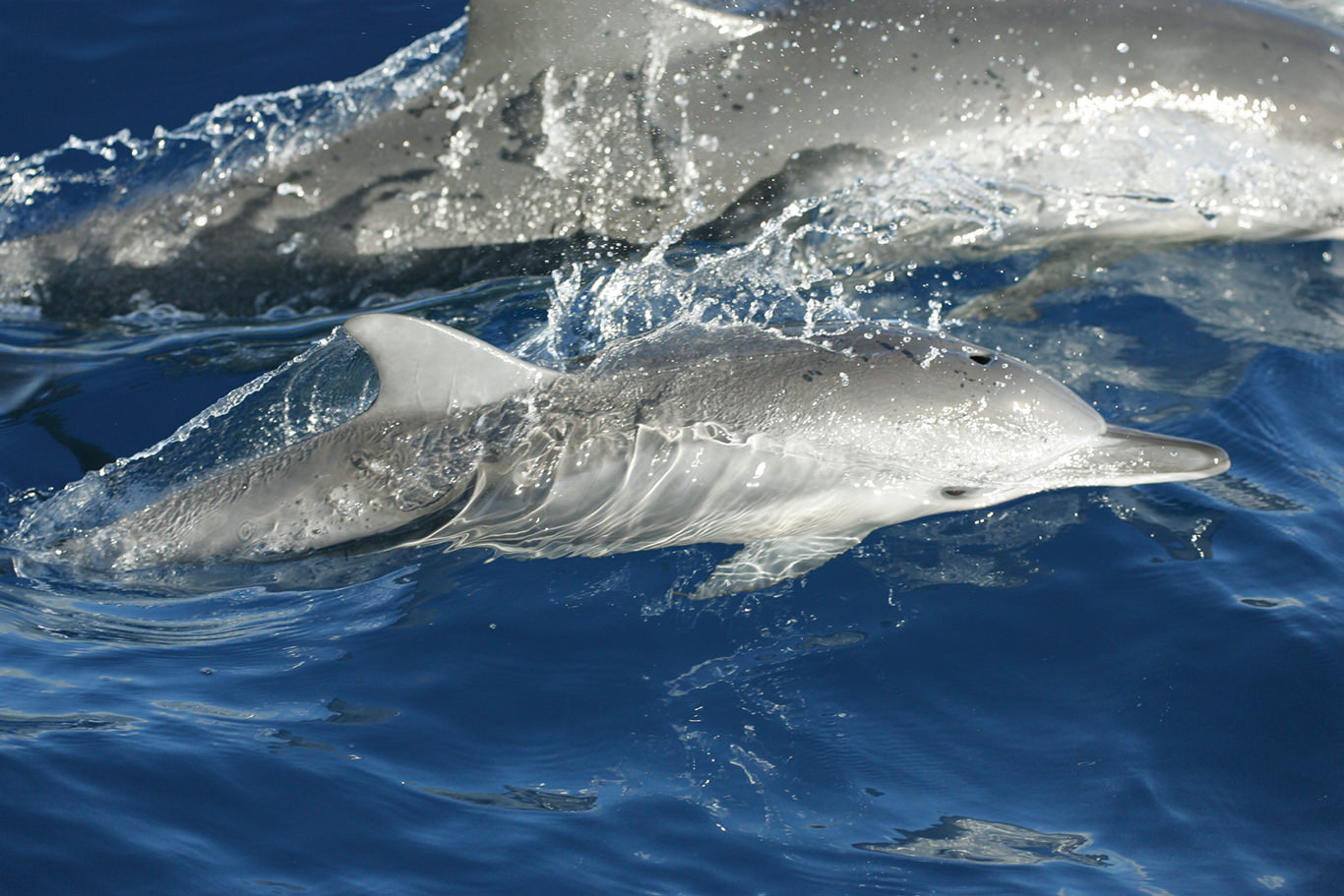
When spinner dolphins “sleep”, they often pair up, get into little groups, or if the entire group is going to rest together, they pack close to one another and act like one giant animal. They all come up to the surface together as one and all descend together towards the reef or sand and slowly swim over it, resting. We watch and listen, enjoying the sounds of their fast breaths, trying to guess where they’ll come up next after a few minutes underwater.
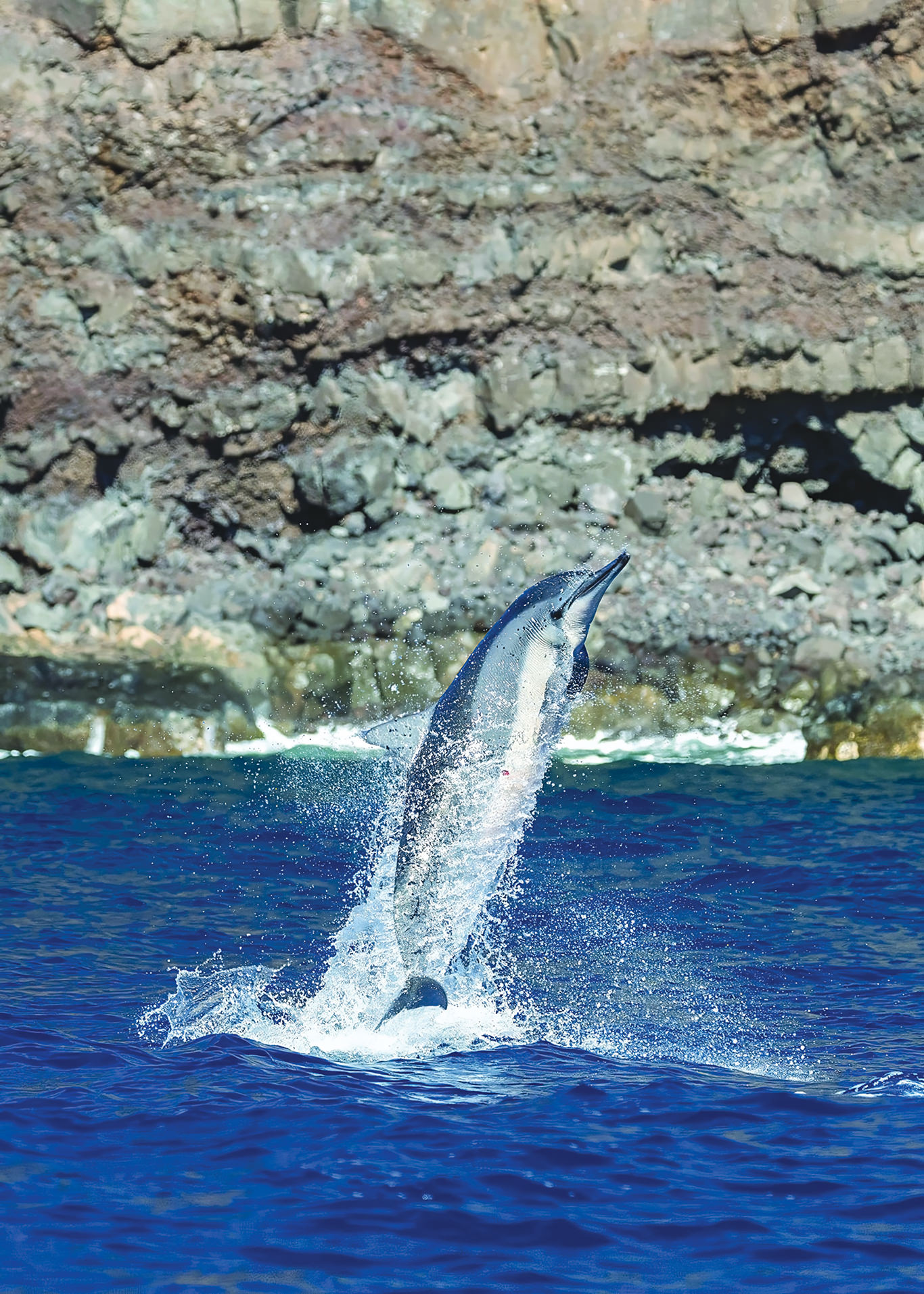
During this time, we can see that some of the dolphins are not interested in sleeping but rather playing and wrestling with each other. Others are jumping and even doing what gave them their name, spinning! Adults and calves both do it for many reasons. They spin to communicate, dislodge parasites and dead skin and maybe get a look around.
They can get up to seven rotations in one jump. While adult spinner dolphins are notably smaller than other dolphin species found in Hawaiian waters like the bottlenose (five to seven feet long versus 12 feet long, respectively) it’s still mesmerizing to see the twister of water surround and jet away from a dolphin that is spinning.
One of the dolphins is a calf that jumps very high and is not spinning. It is wiggling in midair and landing on one side, one jump after another. After a couple of jumps at different angles, we can all see that the little dolphin is trying to remove a parasite, and it’s a big one, a remora fish. The little dolphin tries over and over to jump as high as it can and orient its body so it lands directly on the fish to dislodge it. The remora, on the other hand, wants to stay stuck on the dolphin because it gets a free ride by doing so and therefore gets to eat the scraps of the dolphin’s meals. After 10 to 15 jumps, the calf runs out of steam, but it is successful in getting rid of the pesky remora. After our observation, we move on to the snorkel spot.
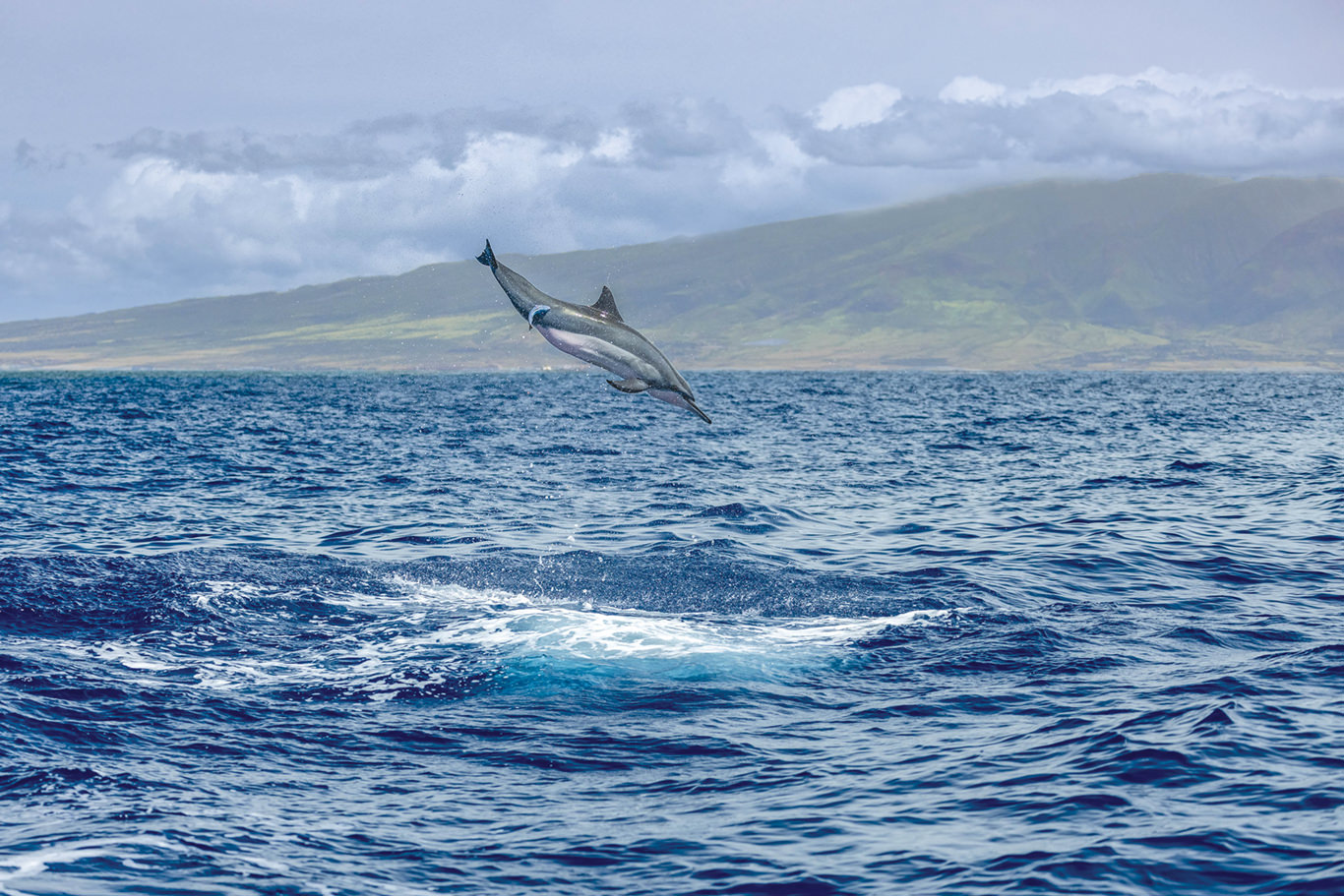
As the sun goes down, well after I have put the boat away for the day, the spinners move away from the shallow waters close to the cliffs of Lāna‘i and into deeper water to hunt for squid, small schooling fish like lanternfish, and shrimp during the night. They don’t have to dive very deep because their prey comes up from the depths in what is called a diel vertical migration. This is the daily, synchronized movement of marine animals between the deep layers of the open ocean and the surface.
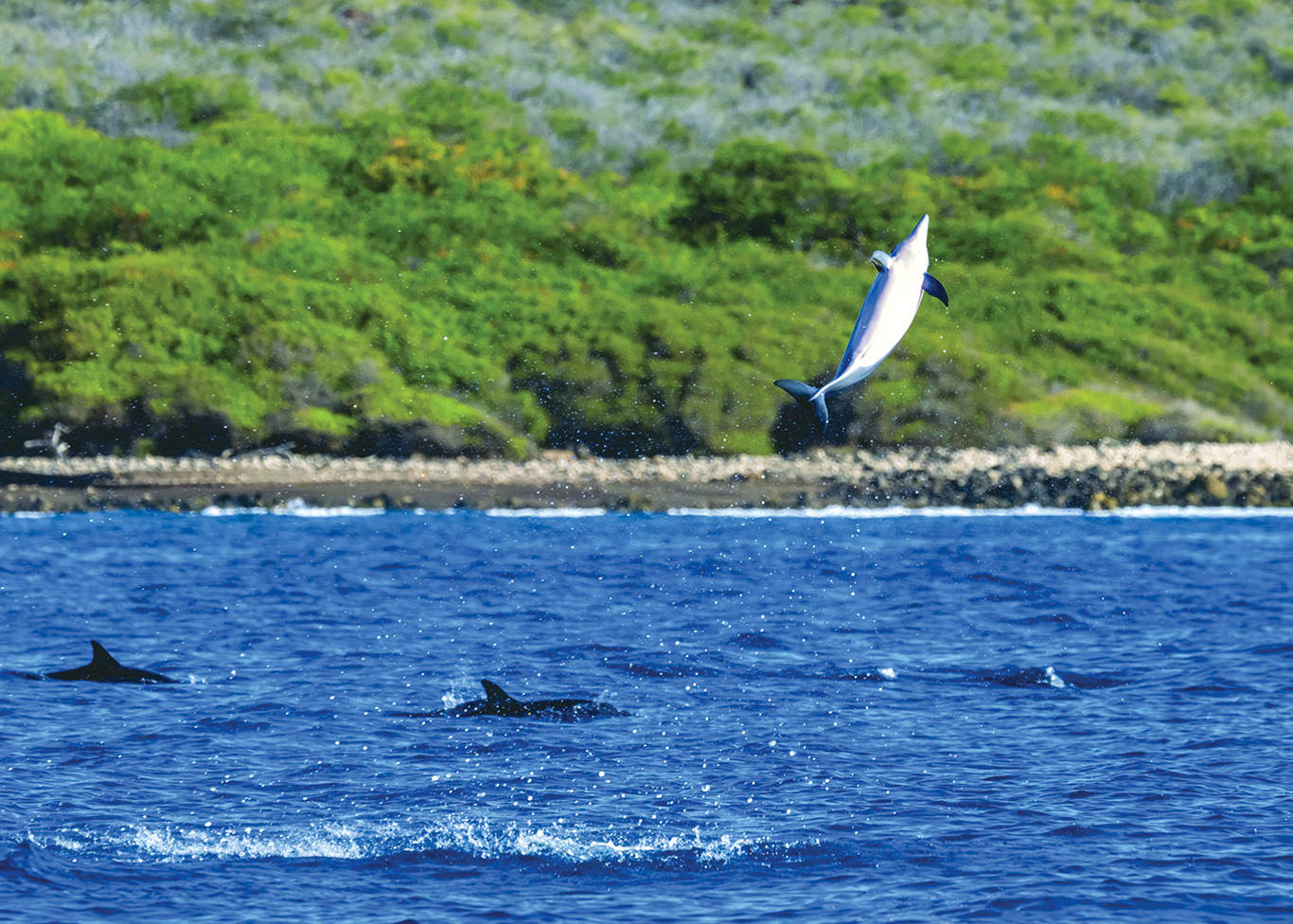
The dolphins hunt all night and as the sun rises, they make their way back towards the shoreline so they can rest, socialize and get ready for the next night’s hunting in the sapphire blue waters off Lāna‘i. The waters off Lāna‘i are a preferred habitat for Hawaiian spinner dolphins, which travel in pods of up to 300 individuals. The dolphins are often seen playfully leaping alongside boats and showing off their distinctive stripes.
After a long night of hunting in offshore waters, spinner dolphins go into “unihemispheric sleep.” One hemisphere of the brain sleeps while the other is alert in order to regulate breathing and watch for predators. Because of their unique rest system, federal law prohibits approaching spinner dolphins within 150 yards.
A spinner dolphin leaps off the coast of southern Lanai in an attempt to rid itself of a pesky hitchhiker: a parasitic remora fish. A small pod of dolphins cluster together in shallow sandy waters, likely during a period of “unihemispheric sleep.” During sleep, the pod acts as one, rising and descending through the water together.
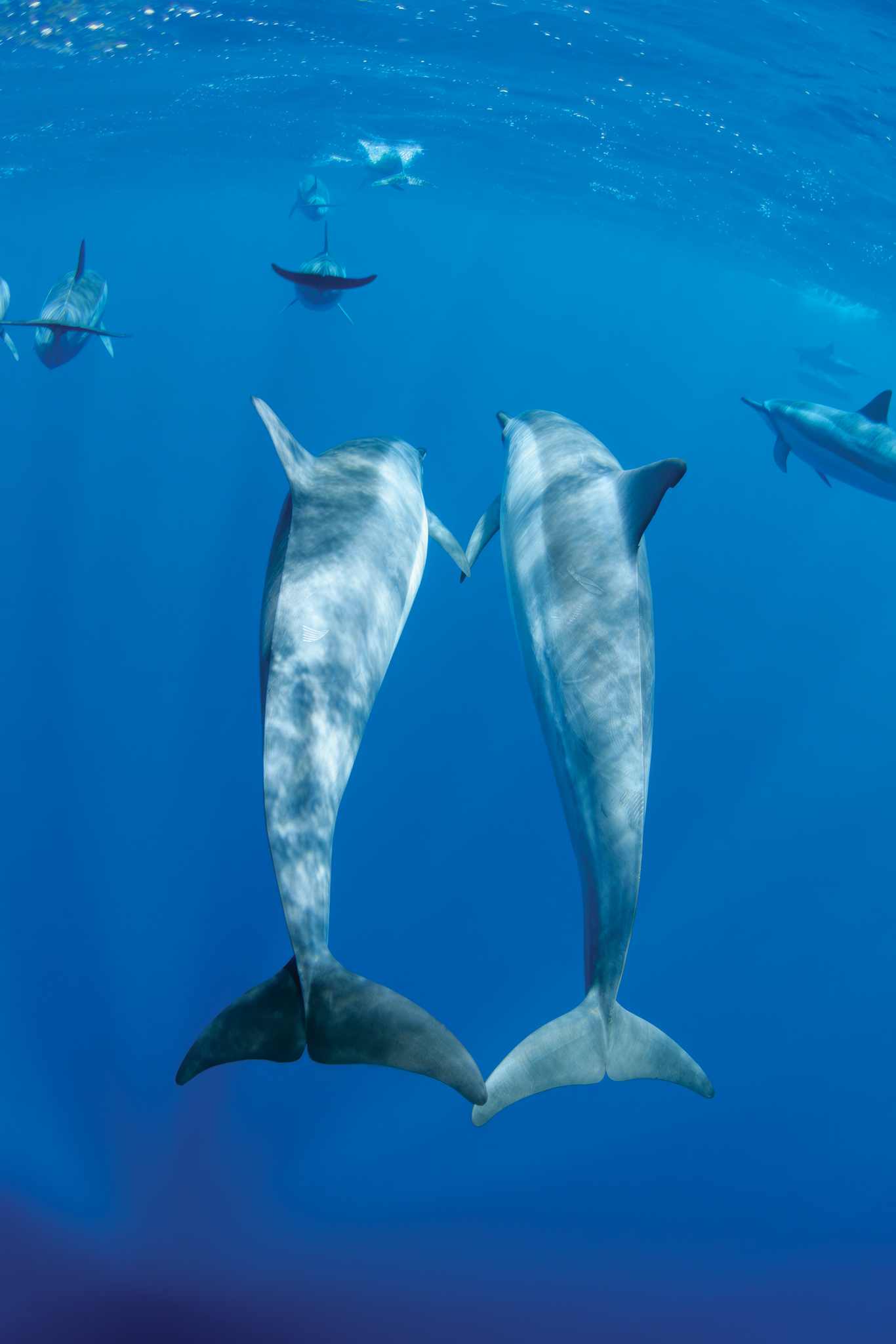
Click here to subscribe to Maui Nō Ka ‘Oi Magazine





